The Long-billed Curlew, Numenius americanus, is aptly named for having one of the longest bills of all shorebirds in America. Its plumage contains shades of light brown, speckled with cinnamon and a paler underbelly. Its curved bill is complemented by a long, elegant neck and slender long legs to help the Long-billed Curlew traverse through wetlands and grasslands alike. Once highly abundant across parts of Canada, the United States and Central America, the infamous ‘Cur-lee’ call of the Long-billed Curlew still brings joy to those who are lucky enough to hear it.
A bird by many names
Although the Long-billed Curlew is their common name, in years gone by these iconic birds garnered many folk names including Sickle bird, Old smoker and Candlestick bird. Different locations across their range have even been named after them, from Candlestick point in San Fransisco where the birds were once much more common to Curlew Valley in North Dakota and Curlew Lake in South Dakota.
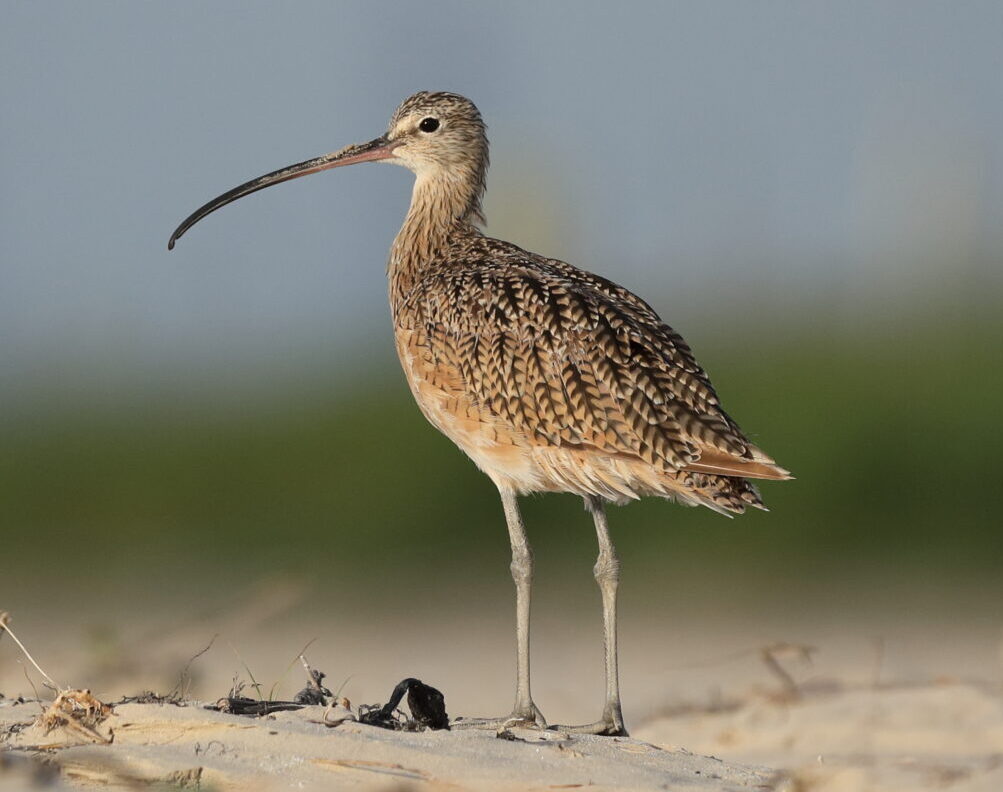
John W. Garbutt
Habitat and feeding
During the breeding season, the Long-billed Curlews head to the expansive grasslands of the northwestern United States and southwestern Canada. Here the habitats include short and mixed grass prairies, as well as agricultural land which has become a prominent habitat in these parts since the 19th century. During the summer before breeding starts, the birds feed in small groups to flush out insects such as grasshoppers, a known favourite of the Long-billed Curlew.
During winter, the birds head south in small flocks to areas along the United States west coast, Mexico Guatemala and Honduras. In the past larger flocks were known to head to the east coast of Floria and Georgia, but now only a small number of the birds make the journey east. Once at their overwintering grounds, they can be found on mudflats, estuaries, beaches and shallow flooded fields where they use their long, curved bill to forage on deep burrowing invertebrates and crustaceans.
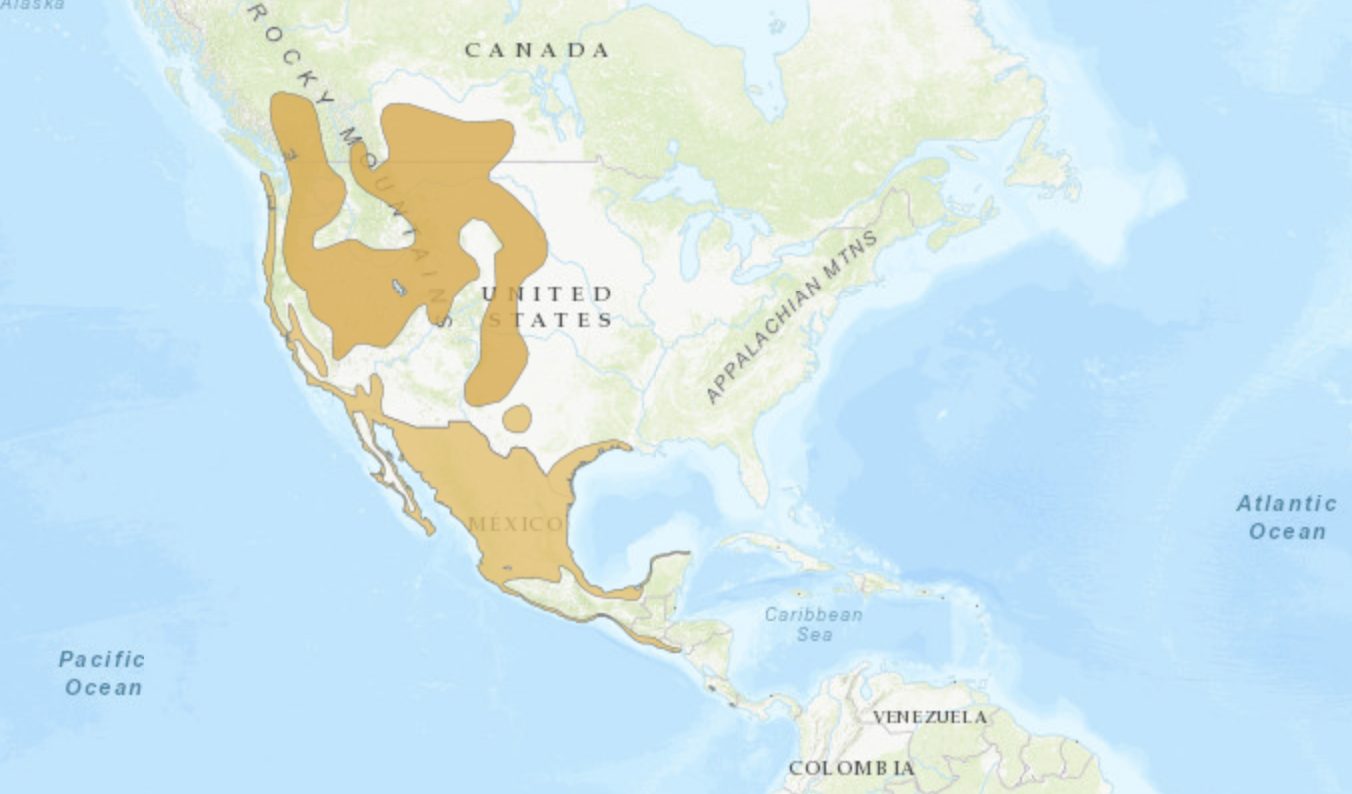

Images from the IUCN website
Nesting
Males court females by making multiple scrapes in the ground, a female will then choose one of the scrapes to begin making a nest and the pair form a monogamous partnership for the rest of the season. The Long-billed Curlew is known to nest near objects such as rocks or even manure; the exact reason why this occurs is not known, however theories include providing protection or making the nest easier to locate. One study even found nesting success in cattle fields was higher for nests created next to cow manure than those that nested away from the manure!
Females commonly lay four eggs and typically have only one brood per breeding season. The nests are incubated for around 30 days by both parents. Once the chicks hatch, they are able to leave the nest within about five hours of hatching to begin feeding and exploring. As with other Curlew species, the chicks are quite independent from the beginning.
After a few weeks the female parent generally leaves first to head south for winter sometime in July, followed by the male parent and then the chicks at around 35-40 days old.
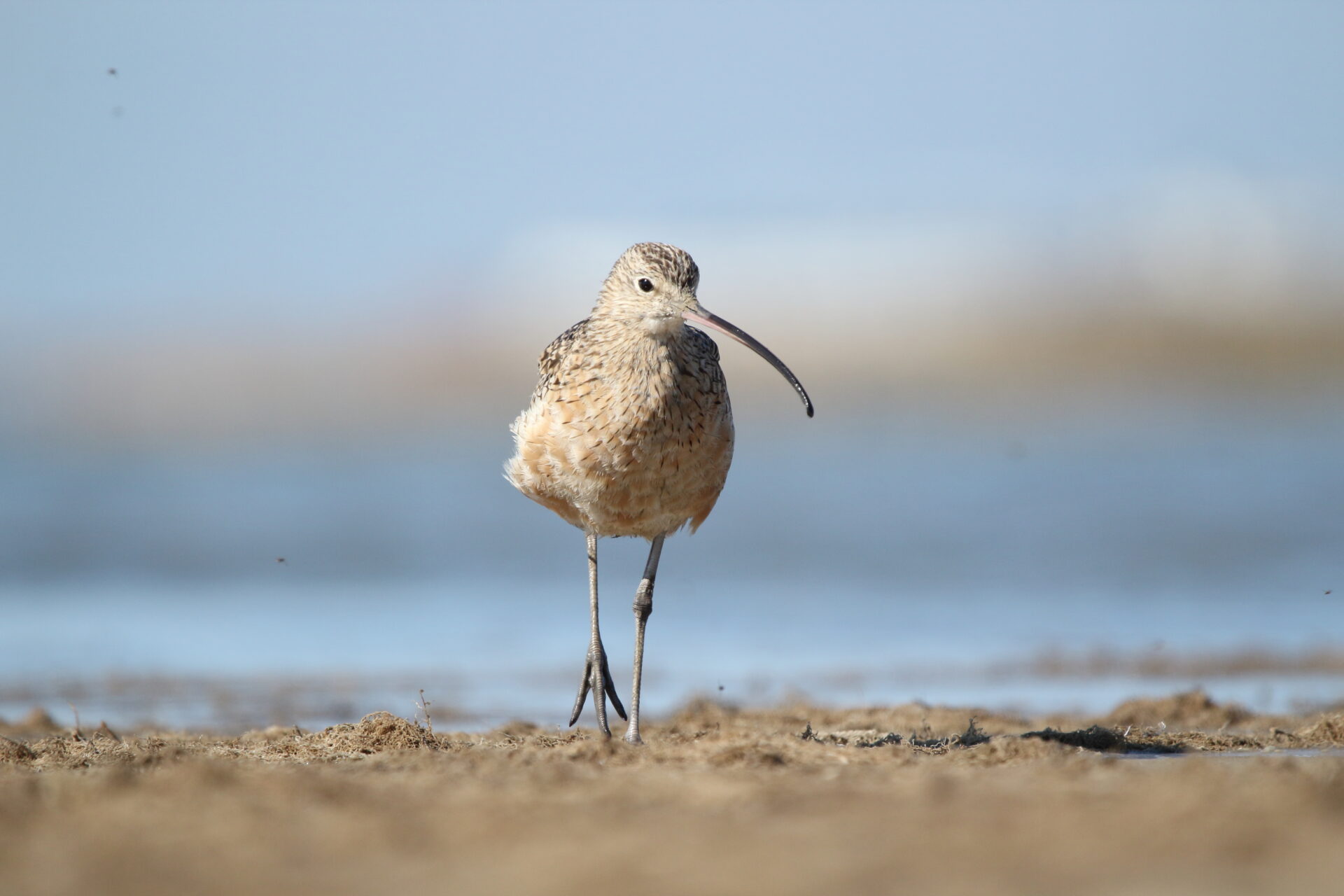
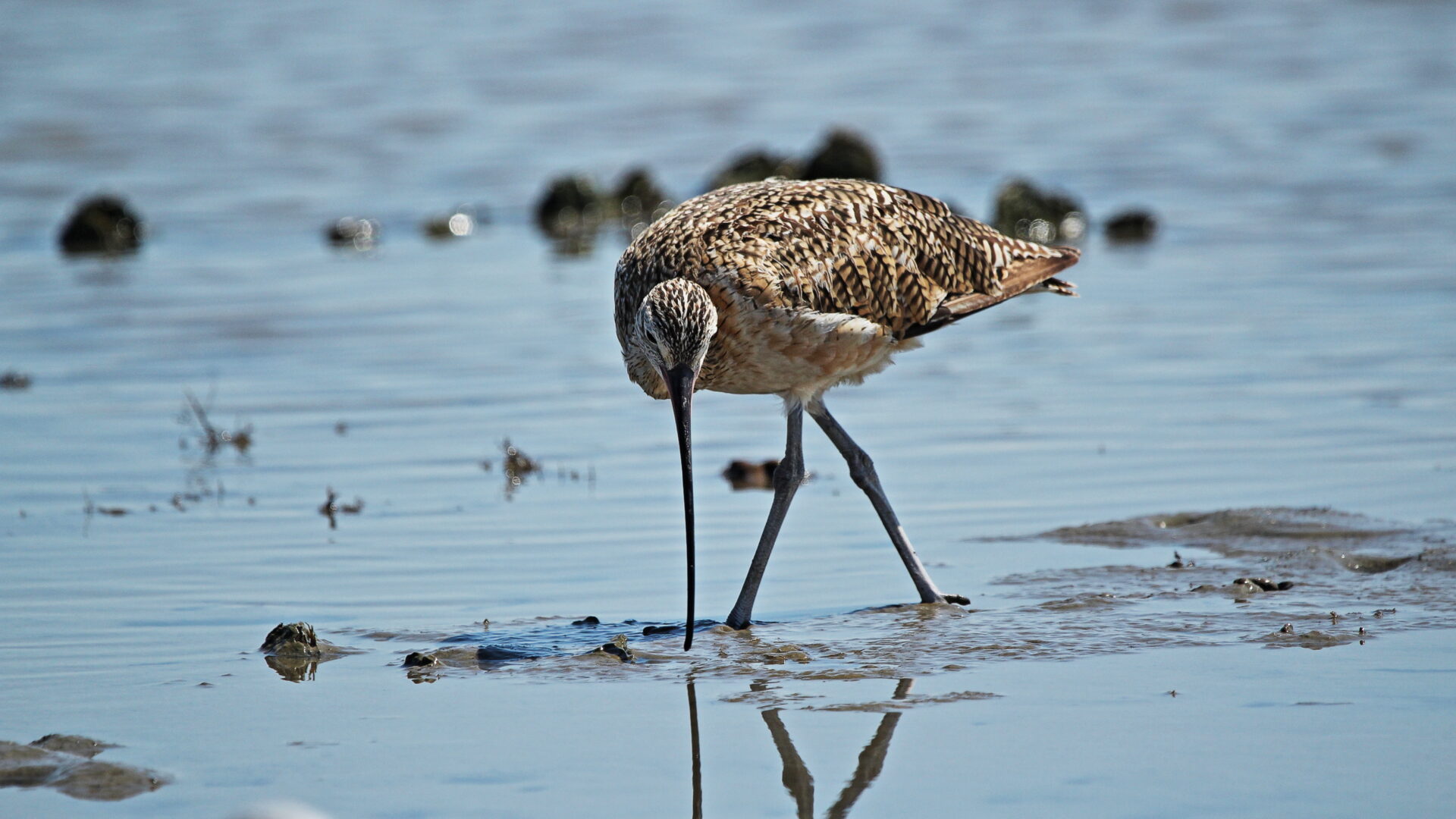
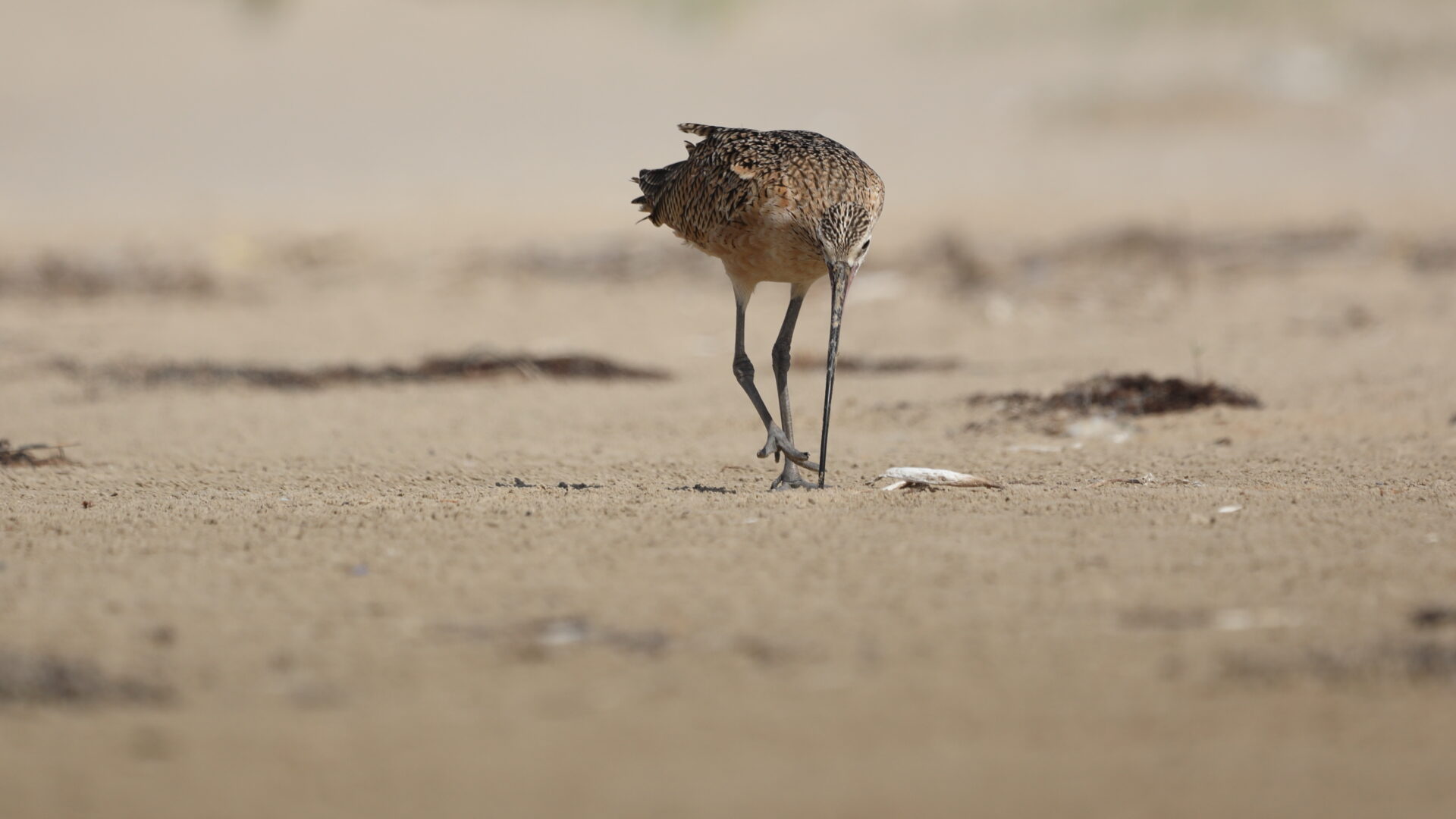
John W. Garbutt
Population and decline
Although the Long-billed Curlew is classed as least concern on the IUCN Red List, the birds are a victim of historic population decline as a result of mass hunting and grassland conversion to agriculture in the 19th century. This has resulted in a decrease to their range seen today across Canada, America and Mexico.
Illegal shooting is still an issue in some states across America, however the main threats that the birds face today include habitat loss due to development and climate change and insect reduction as a result of increased pesticide use. These threats mean that the population of 140,000 birds which was once relatively stable towards the end of the 20th century, is starting to decline across areas of its range once again.
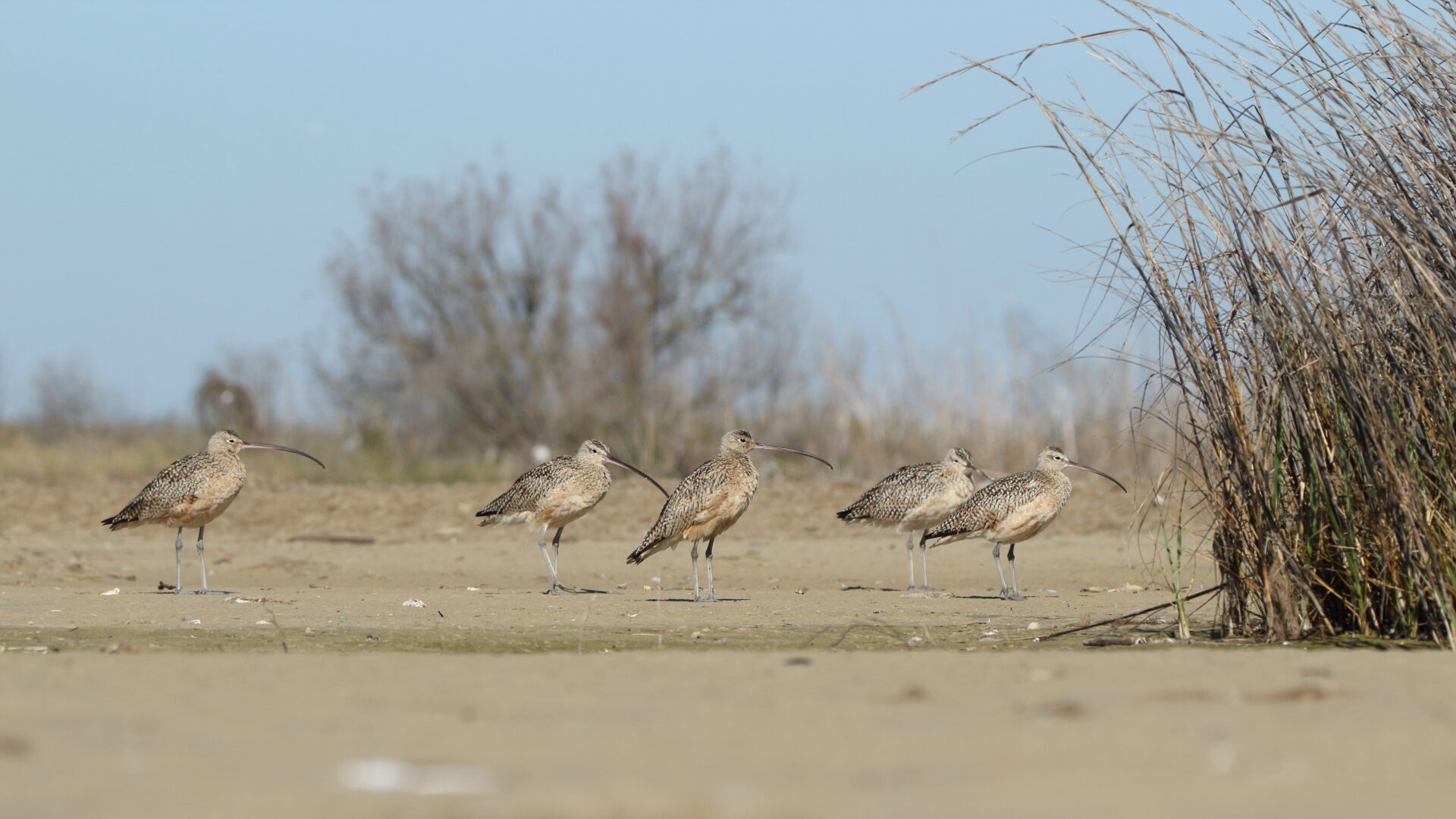
John W. Garbutt
Conservation
In order to combat further population loss, location specific conservation is being carried out by different wildlife groups across the Long-billed Curlew’s range.
Firstly, protection for the birds in their breeding habitat from human disturbance is being implemented to increase nesting and hatchling successes. Protection of breeding sites from urban development is another key conservation tactic being carried out across the breeding range. A reduction in pesticide usage across the grasslands and prairies in which the Curlew feed is also being encouraged to ensure the birds have a healthy food supply to begin the breeding season.
Education and awareness raising around illegal hunting of the Long-billed Curlews is being carried out across states in America where hunting is becoming a threat to local populations. Conservation groups working on this threat note that lack of understanding around the laws protecting birds such as the Long-billed Curlew seems to be a big driver in hunting in these states.
As with some other Curlew species, the Long-billed Curlew is at a tipping point where further decline of the population is a real risk for the species. Nevertheless, there are many groups across it’s range made up of volunteers and conservationists who are working on protecting this iconic species and ensuring the population becomes stable once again.
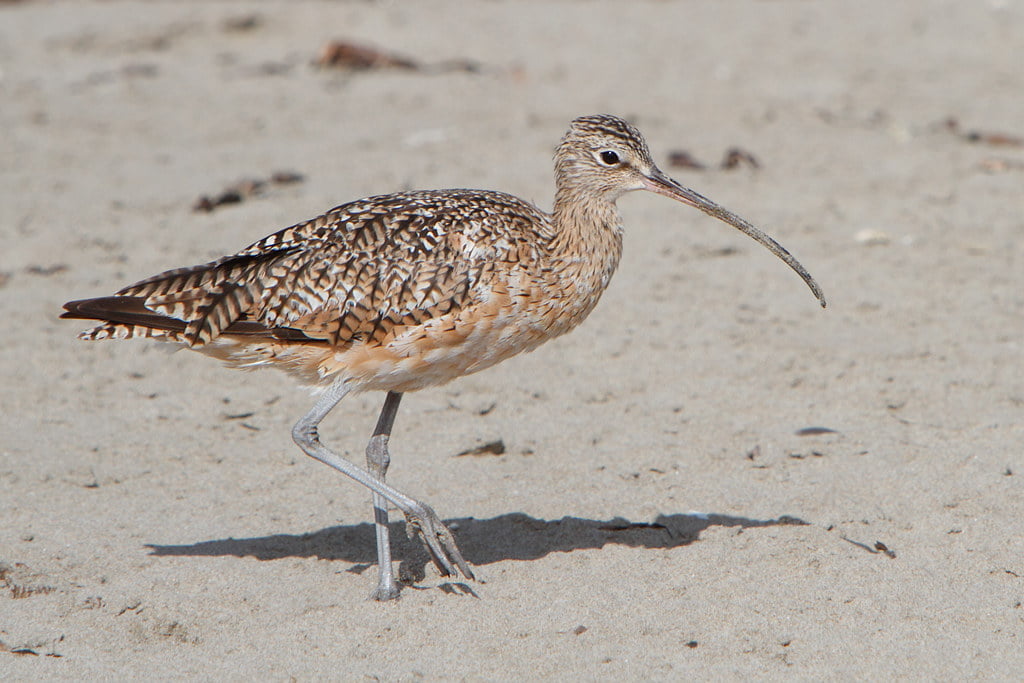

This blog post is part of a series highlighting the different Curlew species from around the world for World Curlew Day 2023. If you would like to learn more about World Curlew Day, please click here. To listen to our Long-billed Curlew podcast episode, click here.
